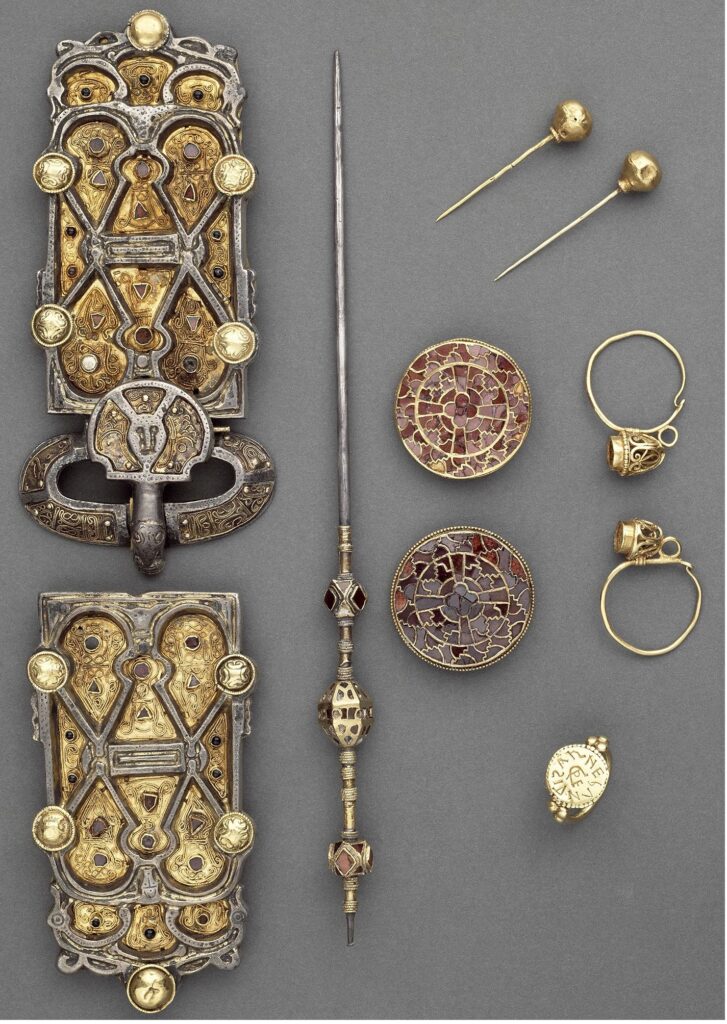Archaeology stories
On the outskirts of Roma, in Gottaferrata
It’s one of the most fascinating archaeological discoveries of recent years: a gold and crystal ring through which a face appears, as if sculpted in several dimensions.
The story takes place on the outskirts of Rome, in Gottaferrata, on the Via Latina, at the beginning of the 21st century: during work to remove an electricity pylon on private land, a few steps appear, leading down to a sealed door. Archaeologists were called in and discovered an intact Roman tomb dating from the 1st century AD. In the middle of the room, which measures just a few square metres, are two marble sarcophagi. One bears the name “Carvilio Gemello”, the other “Aebutia Quarta”.
The lid of Aebutia’s sarcophagus is cracked and the embalmed body has not been preserved. She wears a silk dress, a wig intertwined with gold leaves and silk threads, and garlands of roses, lilies and violets cover her remains. But it is above all the fabulous ring on his finger that catches the eye and allows us to imagine their lives two thousand years ago.
Carvilio was Aebutia’s son. He died at the age of 18 and his mother built him a tomb worthy of her love, gigantic and eternal. When she died a few years later, Aebutia asked to be laid to rest beside her son and to take the ring that represented him with her. On a rock crystal cabochon, the magnified face of Carvilius, bare-chested, with curly hair, thin lips and an aquiline nose. This luminous effect is achieved by a lost-wax casting inlaid in the crystal, giving it a celestial depth. His face appears translucent, forever present.


Arégonde was Queen of the Franks
She died at the end of the 6th century, and her sarcophagus was only discovered in the Saint-Denis basilica in the late 1950s.
The funerary furnishings that adjoined her remains were a veritable treasure trove. On a gold ring, her name was engraved, Arnegundis. She was the wife of Clovis’ son, Clotaire I, and mother of King Chilperic. She was buried with what are thought to be her favourite items of jewellery, since they showed signs of wear: a pair of earrings, two gold cloisonné fibulae decorated with garnet, and gold pins holding a veil.
The study of the various garnets has revealed their countries of origin: India, Bohemia and Portugal, reflecting the many commercial exchanges of the period.